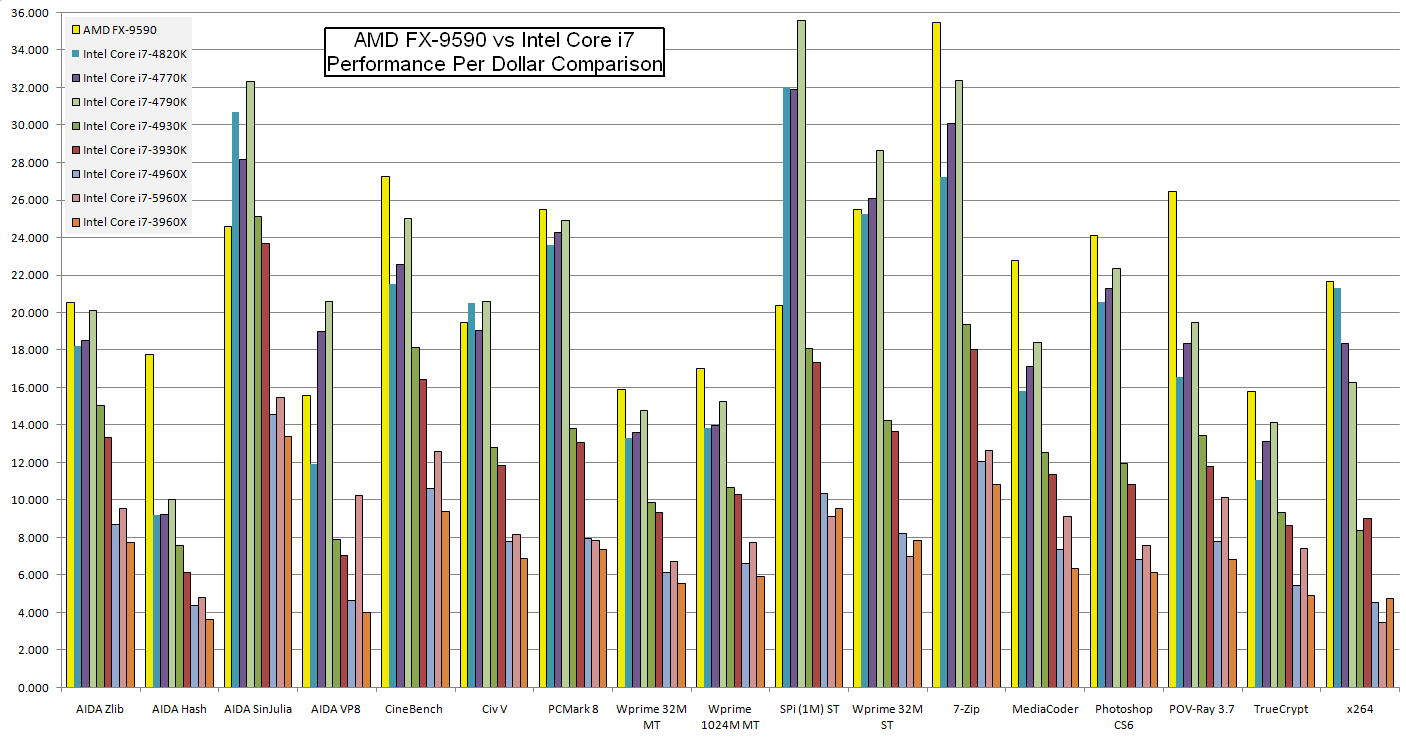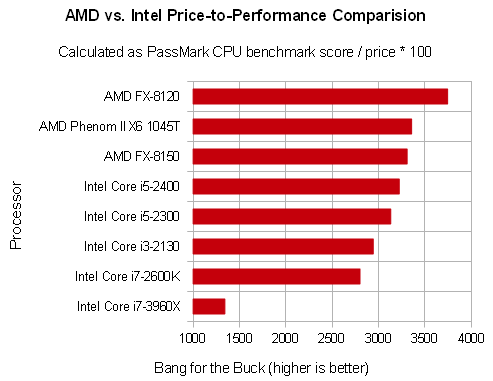I decided this month that it was time to look at replacing my AMD Phenom II X4 965 BE chip with something that could transcode high-definition video faster. Sure enough, I chose the AMD FX-9590 CPU. Arguments against the AMD FX-9590 on forums such as Tom’s Hardware and AnandTech include “power efficiency is too low/TDP is too high” and “Intel has higher/better instructions per clock (IPC)” and “Intel’s i7 performs so much better.” Notably, the price to obtain the superior Intel performance was almost completely ignored in these discussions. Consider that the AMD FX-9590 retails for around $260 and the Intel Core i7-4770K it is often compared to costs $335; that $75 difference is enough cash to buy a cheap motherboard or a 120GB SSD, and also represents a 29% price increase over the FX-9590. Does the i7-4770K really perform 29% better than the FX-9590? The short answer is “no.” The long exception to that otherwise straightforward answer is “unless you spend all of your time calculating Julia mandelbrot sets and the digits of pi.”
Over two years ago, I wrote an article about how AMD CPUs beat Intel CPUs hands down when you factor in the price you pay compared to the performance you get. Most of the arguments I received against my assertion were against the single-figure synthetic benchmark (PassMark) I used to establish a value for CPU performance. This is understandable; synthetic benchmarks that boil down to “One Number To Rule Them All” don’t help you decide if a CPU is good for your specific computer workload. This time, I’ve sought out a more in-depth benchmark data set which can be seen here. I compiled some the relevant figures (excluding most of the gaming benchmarks) into a spreadsheet along with the Newegg retail price of each CPU as of 2014-10-23, used a dash of math to convert “lower is better” scores into an arbitrary “higher is better” value and some fixed multipliers per benchmark to make them all fit into one huge graph which can be downloaded here: cpu_performance_comparison.xls
And now, ladies and gentlemen, the moment you’ve been waiting for: a graph of a wide variety of CPU benchmarks, scaled by the price you pay for each CPU (click to expand the image.)
 CPUs in each bar series are ordered by retail price in ascending order. The FX-9590 is in yellow on the left of each series and Intel only has a CPU that beats the AMD offering in 4 out of 17 price-scaled benchmarks, most of which are synthetic and don’t represent any typical real-world workloads.
CPUs in each bar series are ordered by retail price in ascending order. The FX-9590 is in yellow on the left of each series and Intel only has a CPU that beats the AMD offering in 4 out of 17 price-scaled benchmarks, most of which are synthetic and don’t represent any typical real-world workloads.
AMD wins again.
Update: In case you needed more proof that the FX-9590 is the best encoding chip, someone sent me a few links to more x264 benchmarks: 1 2 3
